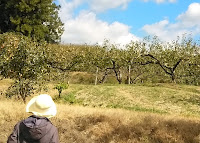Libraries' role being questioned as users are on increase in Japan
Many Japanese tend to be more impressed by the arrival of autumn in their daily life compared to that of other seasons. This is why they like to characterize autumn in various ways; autumn is the best season for Japanese to have fun with arts, or read books, or enjoy eating.
The number of libraries in Japan, mostly public ones, has been increasing in recent years. So has been the number of users, from children to elderly people.
With a population of some 127 million, Japan had approximately 3,300 libraries in 2018, an increase of over 20 percent in 15 years. The number of registered users grew to about 58 million.
Why is the number of library users increasing? Various reasons are cited for the phenomenon, but relevant figures indicate the increase reflects efforts by librarians and other related people to make libraries in the country make friendlier to citizens.
Of the libraries across Japan, about 95 percent open on weekends and holidays, while about 90 percent of them have barrier-free facilities.
These efforts have come at a time when Japan's population has been aging year after year. The moves are important and welcome for elderly people, but the fact must be mentioned that libraries in Japan have become a place for many citizens to relax themselves, experts say.
Libraries are an important social infrastructure in which citizens can spend their time to satisfy their respective purposes, but they must provide opportunities to citizens for learning and making research and studies about their life and jobs, and this is an essential mission for libraries, they say.
Following changes in Japan's social situation, libraries continue to fulfill their missions, but this year, they have endeavored to secure a safe, healthy environment for users amid the covid-19 pandemic.
Visitors are asked to clean their hands with disinfectants and register their name and phone number at the entrance, so that they can be reached when necessary. At some libraries, a book sterilizing machine can also be seen installed in the library room.
Cited as a matter of recent concern for libraries is a continued decrease in the number of books sold. This reflects the fact that the number of printed books is on the decrease following the spread of digitized books on new social media tools.
The plight of conventional book publishers and editors has led them to blame their difficulties on libraries' moves to have more entertainment books like novels in their collections.
A noted book publisher has asked for a grace of one year before libraries buy newly released books for their collections.
Following the spread of digitized information on the Internet and efforts to develop an even quicker search engine, libraries may become a useless facility in society in the not too distant future, some experts warn.
Japan had boasted a high literacy rate from as early as the 19th century. Westerners who came to Japan before it opens itself to the rest of the world in the middle of the 19th century were surprised to see not a few ordinary people reading books.
Young Japanese tend to spend less time for reading printed books to obtain information, but Japanese people have essentially loved reading books.
Despite the series of changes in society, Japan's libraries are expected to remain as an important social facility to help satisfy citizens' needs to know.


















































